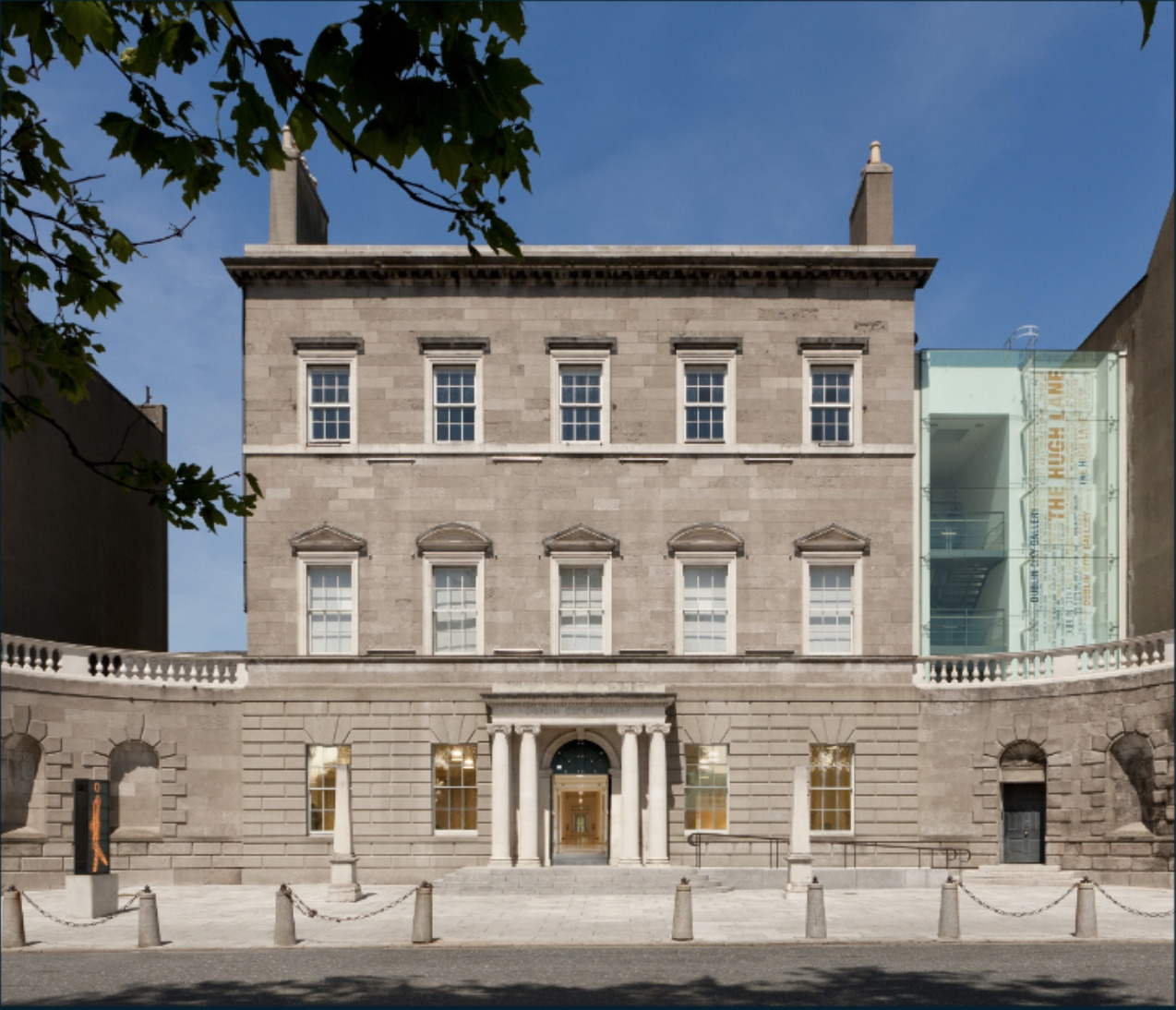Located in Dublin’s City Centre, in Parnell Square, Hugh Lane Gallery, (originally named Municipal Gallery of Modern Art), houses one of Ireland’s most exciting collections of modern and contemporary Irish and international art. It is also the home of Francis Bacon’s Studio. The gallery was founded by Sir Hugh Lane in 1908 as part of the dynamic and pioneering Celtic Revival Movement in Ireland at the turn of the 20th century.
See Impressionist paintings by Manet, Monet Degas, Pissarro and Morisot. Enjoy works by Agnes Martin, Nikki de Saint Phalle, Joseph Beuys, Günther Uecker and the stunning Francis Bacon studio. Enjoy the wonderful collection of Irish art and meet some of the famous Irish personalities in portraiture including W.B Yeats who wrote five poems about the gallery including the famous Municipal Gallery Revisited, Augusta Lady Gregory who, with W.B. Yeats, was a founder of the Abbey Theatre and political figures including Michael Collins, Eamon De Valera, Edward Carson and John Redmond. Don’t miss the beautiful stained-glass room where Harry Clarke’s masterpieces The Eve of Saint Agnes and Mr Gilhooley reside.
The international contemporary collection is diverse and extensive and includes the Sean Scully gallery, one of the most beautiful rooms dedicated to the work of a contemporary artist in Europe.
Francis Bacon’s legendary studio was relocated from 7 Reece Mews, London to Dublin in 1998 and now is permanently on display, preserved exactly as it was. Together with fascinating unfinished works by Francis Bacon, display cases presenting items from the studio, an audio-visual room and touch screen terminals it allows the visitor to delve further into the life and art of one of the most important figurative artists of the 20th century.
Hugh Lane Gallery is situated in the beautiful Charlemont House built in 1763 by the 1st Earl of Charlemont James Caulfeild. Designed by Sir William Chambers, it still retains many of its original architectural features which complement the works on exhibition.
Facilities include bookshop and café. Full wheelchair access and two designated disability parking spaces are located directly outside the gallery.
The gallery regularly organises temporary exhibitions and new displays from its collections. It also has public tours of the gallery.
-
About Charlemont House
James Caulfield, the First Earl of Charlemont (1728-99), commissioned the neoclassical architect Sir William Chambers (1723-1796) to build his town house Charlemont House in 1762. A great collector of antiquities as well as a patron of the arts, Lord Charlemont was also a patriot and, as Commander-in-Chief of the Irish Volunteers, was passionately involved in the politics and military affairs of Ireland.
Charlemont House is intimately linked with its setting, Parnell Square, or Rutland Square as it was originally named. While the site was deep and relatively narrow for an aristocratic townhouse, Chambers overcame its limitations by designing a shallow forecourt where carriages could pull up, a particularly grand detail in a city dwelling. Work began around 1763 but Lord Charlemont’s periodic shortage of funds meant the house was not finished until at least 1775. The façade of Charlemont House is of Palladian design and is built of brick with limestone rustication at ground-floor level. The reception rooms are arranged around the central core of the service stairs and the continuous circulation between the first floor rooms (now gallery exhibition rooms) reveals the social nature of the planning of the house.
In the entrance hall the chimneypiece on the right is particularly magnificent and is inspired by ancient Rome, with the classical mood carried through into the plaster details on either side of it. Chambers’ original design for the chimneypiece which is held in the Metropolitan Museum of Art in New York, shows that he had decided on the design as early as 1762, before the building was under construction. The chimneypiece on the left side of the entrance hall was also designed by Chambers and has decorative details which include waterleaf capitals, fluting and a central feature of a vase with rams’ heads and draped ribbon.
The principal staircase retains its original wrought iron balustrade, composed of foliated s-scroll panels and an ornamental string modelled in relief with lion masks. The reception rooms on the first floor contain magnificent original features including coved ceilings designed by Chambers and a marble chimneypiece by Pietro Bossi, an Italian who lived and worked in Dublin. The design of the Bossi chimneypiece, which includes dancing figures, was inspired by what is known as the ‘Etruscan Style’ which was influenced by the excavations at Pompeii and Herculaneum from the mid-eighteenth century.
To the rear of the house, at the end of the garden were rooms, now no longer in existence, which held Lord Charlemont’s renowned personal collections including a collection of ancient medals and coins. Chambers designed a cabinet specifically for this collection and the cabinet is now on view in Somerset House, London. However, the outline of where it originally stood is marked by the stuccowork on the ceiling in the Chambers Room, now a gallery of Francis Bacon’s work.
Hailed as ‘…the best town house in Dublin’, Charlemont House was a major addition to Dublin’s architecture, assuming a place of honour among the city’s other great mansions such as Powerscourt House and Belvedere House, as well as Leinster House now Dáil Eireann.
In 1929, Charlemont House was chosen to be the permanent home for the Municipal Gallery of Modern Art which had been established by Sir Hugh Lane in 1908. The gardens of the house were the site of the new galleries designed by the City Architect Horace T. O’Rourke. In 1933 Charlemont House was officially opened as the Municipal Gallery of Modern Art now known as Hugh Lane Gallery.
-
Hugh Lane Gallery Trust: Board of Trustees
Terence O’Rourke – Chairperson
Declan Mc Gonagle
Emma Dabiri
Mairead Owens
Eileen Quinlivan
Monica Flood
Cllr Carolyn Moore
Cllr John Stephens
Cllr Gayle Ralph
Cllr Fiona Connelly
Valerie Mulvin
-
Strategic Plan 2025 – 2029
Available to download here:





